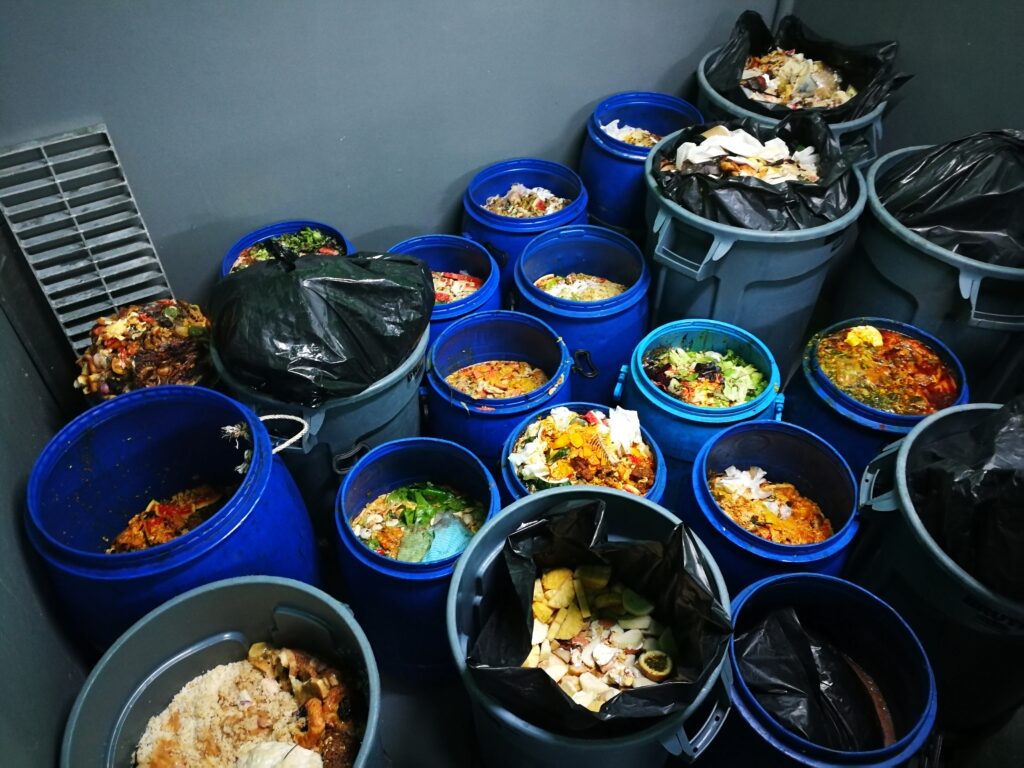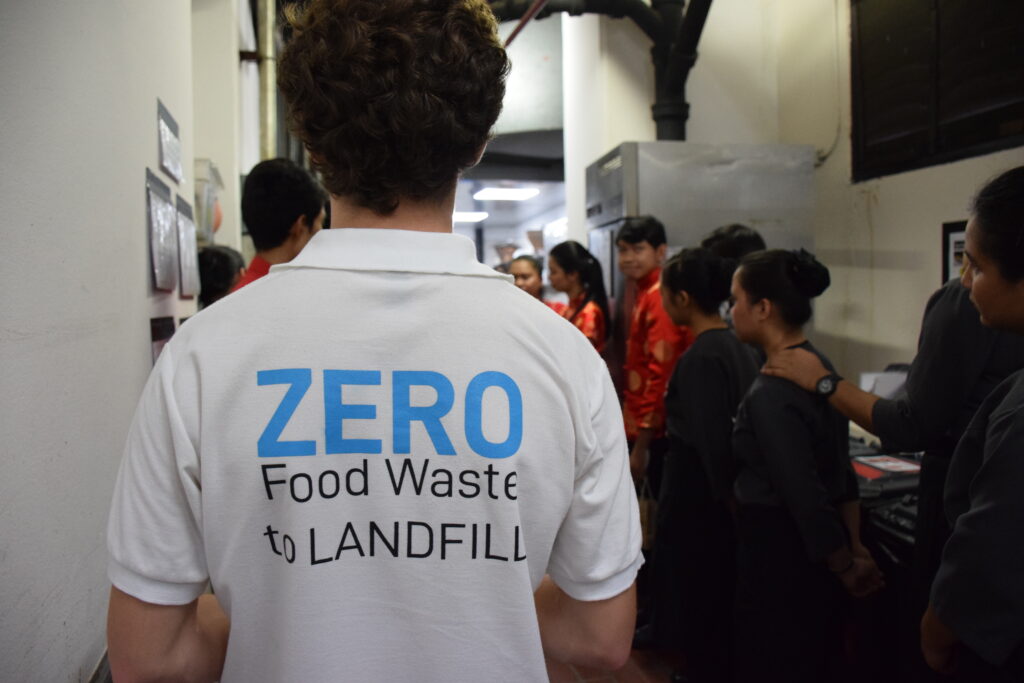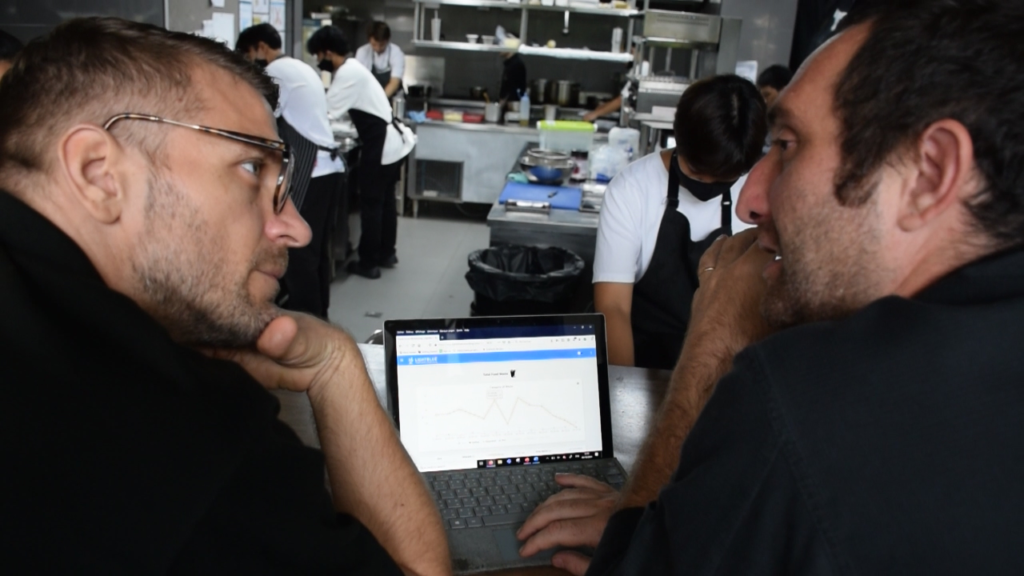There is growing awareness of the environmental, social and economic problems caused by food waste occurring at many levels, from domestic kitchens to huge food production and distribution companies.
Food waste reduction is a part of the SDG, the UN Agenda 2030 for Sustainable Development Goals. The recent United Nations Environment Programme Food Waste Index Report 2021 suggests that cutting food waste could lower global greenhouse gas emissions by 8-10%. Taking action to reduce the amounts of food produced but not eaten is crucial to the future of the world.
This is the motivating force behind the introduction of the brand new module on Food Waste Prevention, taught by Benjamin Lephilibert, LightBlue Environmental Consulting Founder & Managing Director, in the MSc in International Food and Beverage Management.
ESCP is among the first Business Schools in Europe to have curricular specific courses on food waste prevention.
Benjamin Lephilibert guides us through this relatively unknown but very important subject.

What is the link between food waste and climate change? What are its main implications?
Few people understand that food waste is having an impact on climate change. Why? Because to grow food, you need a lot of land, water, chemical input and lastly time. Also, there is a high number of resources involved, namely manpower, money, transportation, facilities and so forth. Combined, all of those resources have an impact on natural resources and ultimately on climate change.

How important is it to train the future generations of F&B managers in food waste prevention?
I am so excited to get Master students in Food and Beverage to join this class. This is the first time. It is really crucial. Besides the technical aspect that we will try to cover during these modules and the applicability of this knowledge in their future professional lives, it is primarily a question of mindset. If we can get the students to change the perspective on food waste and not see it as a normal by-product of what will be their daily lives, then they will act upon it if they understand the consequences. This is the primary goal of this food waste prevention class.
How aware is the F&B industry of this issue?
There is very little awareness on the topic of food waste in the F&B industry. There are, fortunately, some young chefs who are leading the way. But the vast majority of industry players have no understanding about the quantities, reasons, financial and environmental impact of food waste, and they are completely unaware of what they can be doing to reduce this impact, which is sad because simple stuff can add up. It is a question of perspective and understanding this issue first.

Why is food waste still so low on the agendas of global hospitality groups?
Food waste is so low on the agenda for various reasons. Firstly, they don’t monitor food waste. We estimate that less than 3% of food services in general are monitoring food waste. So that means they don’t understand how much, when, where, what or why food is wasted. There is an issue with traditional financial indicators, like food cost percentages that are incomplete and do not reflect how effective they are. Those misconceptions, such as the idea that food waste has a marginal cost, even though it represents 6% to 14% of revenue. So, if this knowledge was more widely shared, I am sure that there would be many more players actually fighting this pandemic.

What is the key to setting up an efficient food waste prevention system?
There are a couple of aspects. The first is the team as it simply cannot be a one-person job. If you want efficient results, you can have the best technology. However, if only one person is in charge, nobody will really pay attention. The second is to make it simple, practical, colour coded, adapted to each working station, centralised and the procedure should be clear for everyone. Then usually the food waste monitoring system works well. Communication is also crucial between the front and the back, meaning the customer-facing employees and those working in kitchen-forecasting. But I would say awareness is the top element to prevent food waste because if employees understand why food waste is an issue, then the “how” is much easier as they will simply come up with their own solutions.
Can innovation and emerging technologies reduce food waste?
Indeed, innovation in particular. However, technology also plays a crucial role but this has to be complemented by the human factor. Innovation is what we are trying to instil in the partner organisations we’re working with. It can take several shapes. We try to have innovative human resource management systems with roles and responsibilities, but also with incentives and clear adaptation of SOP’s. We also try to instil innovation in the way employees are looking at food because ultimately they have much more knowledge about the product than we do as they are food professionals.
What are the main food waste generation points along the supply chain?
Food loss and food waste vary greatly depending on the geographical location. Food waste regeneration is happening at the production, handling, storage, processing, distribution, market and consumption level. We also see huge differences, for instance, between Sub Saharan Africa where production, handling and storage food loss are representing more than 70% of all food wasted. On the other hand, in North America and Oceania, it’s actually just consumption plus distribution and market, representing 70% of food waste. That means the moment of occurrence of food waste varies dramatically, depending on the income of the country. Lower-income countries usually waste much more at the harvest and post-harvest level, while higher-income countries waste much more at the consumption level.


